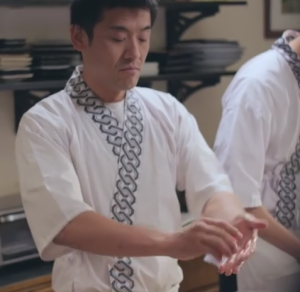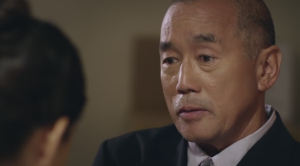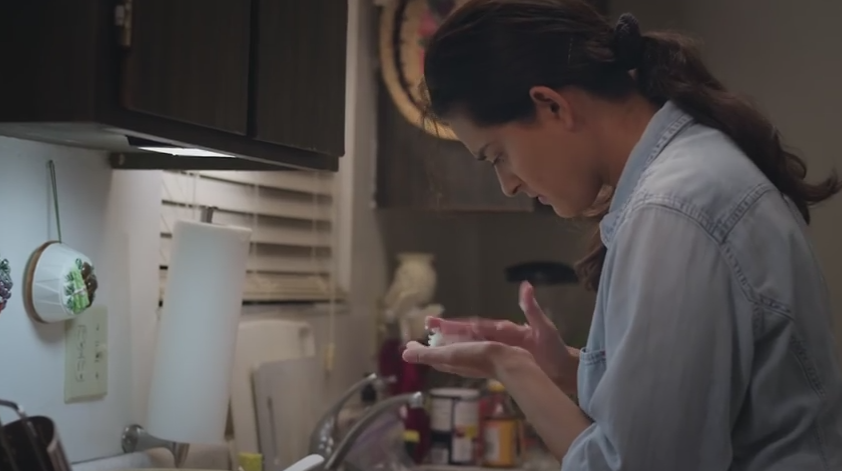East Side Sushi, a multiple-award winner on the film festival circuit, made its debut in limited theatrical release this weekend and stars Diana Elizabeth Torres as Juana, a Latina single-mother who desires to become a sushi chef. Traditional cultural authenticity though stands in her way and raises the questions of what makes ethnic food and the dining experience truly authentic. What Juana fights to prove is that it is not who makes the food that defines authenticity but how one makes it. In this, I can heartily agree. Just because a certain type of food is associated with a particular culture or race does not mean all others should be excluded from it. It creates a type of cooking segregation. Sharing aspects of cultures does not mean one is degrading them. As Juana shows, it is simply a way of expanding them.
For many people, food is an integral and defining part of their culture. It is one of the most longed-for and missed things when one travels or moves overseas. Having lived in Japan for about seven years, I know the feeling well. I missed items like grits and Ranch Doritos and could only find them in international food stores (for exorbitant prices). Here in Southern California, Asian grocery stores abound with food items that originated from Vietnam, China, Japan, India and so on, their presence a confirmation of how important having one’s cultural food is to people. But what happens when cultures collide in the food world? It’s called fusion which continues to grow in popularity. Just think about Roy Choi and his Korean BBQ tacos that are found throughout L.A. on the Kogi food trucks. What is not popular though, as the movie discusses, is a fusion of the people who make the food.
Juana’s path to becoming a sushi chef starts with her looking for a better job after being robbed while selling fruit from her cart. She passes by a sushi restaurant and is amazed by how different the food is compared to what she normally cooks and eats. She applies for a behind-the-scenes kitchen job there despite little approval from her father who is a very set-in-his-ways type of person. Throughout most of the film, her father cannot understand Juana’s interest in Japanese cooking and like many of her coworkers thinks it is weird for her to be involved in something non-Mexican.
 Cultural and racial differences are not all that stands in her way though. Gender is also a barrier when it comes to the world of sushi chefs and traditional Japanese roles. Her first experience with this is during her interview where it is pointed out how all her previous restaurant jobs were Mexican and how they usually do not hire women because of the need to carry 50 pound bags of rice. Juana counters by saying how she carries her 52 pound daughter for hours, showing that she is capable of the job. With my knowledge and experience with Japanese culture, I can certainly say that many of the issues Juana faces due to cultural, racial and gender biases are because of the strictness and old-fashioned style of Japanese roles in society. There is almost a 1950s lifestyle for women in Japan (which is changing but not as quickly as other developed countries), which is probably best displayed when the sushi chefs tell Juana that women cannot make sushi because their hands are too warm. A statement that just made me gape at the absurdity of it. Juana later destroys that belief as she learns how to make sushi on her own at the encouragement of one of the chefs, Aki. The lack of female chefs though is not limited to Japanese restaurants but is something that can be seen throughout the restaurant industry, especially in the case of head chefs. This is changing of course and more women are entering the field and get higher positions as one New York Times article discusses. An article by Bloomberg though says how women hold only 6.3 percent or 10 out of 160 head chef positions at 15 prominent U.S. restaurants.
Cultural and racial differences are not all that stands in her way though. Gender is also a barrier when it comes to the world of sushi chefs and traditional Japanese roles. Her first experience with this is during her interview where it is pointed out how all her previous restaurant jobs were Mexican and how they usually do not hire women because of the need to carry 50 pound bags of rice. Juana counters by saying how she carries her 52 pound daughter for hours, showing that she is capable of the job. With my knowledge and experience with Japanese culture, I can certainly say that many of the issues Juana faces due to cultural, racial and gender biases are because of the strictness and old-fashioned style of Japanese roles in society. There is almost a 1950s lifestyle for women in Japan (which is changing but not as quickly as other developed countries), which is probably best displayed when the sushi chefs tell Juana that women cannot make sushi because their hands are too warm. A statement that just made me gape at the absurdity of it. Juana later destroys that belief as she learns how to make sushi on her own at the encouragement of one of the chefs, Aki. The lack of female chefs though is not limited to Japanese restaurants but is something that can be seen throughout the restaurant industry, especially in the case of head chefs. This is changing of course and more women are entering the field and get higher positions as one New York Times article discusses. An article by Bloomberg though says how women hold only 6.3 percent or 10 out of 160 head chef positions at 15 prominent U.S. restaurants.
What this movie shows best is Japanese culture’s deep fascination with appearance, which is considered the most important thing. Mr. Yoshida, the owner of the restaurant, constantly proves this. He may seem to be all about providing an authentic experience, but in truth it is about the appearance of authenticity, as Juana points out. Only one of the chefs is actually Japanese, Aki, while the other two are Korean and Chinese. When Juana questions their right to be sushi chefs against her own, she is told that the Korean chef, Kyung, studied in Japan and the Chinese one, Robert, is not even provided with an explanation. This then shows how Kyung and Robert can be sushi chefs because they are both men and can both “pass” as Japanese. Thus the appearance of being a Japanese chef is more important than Juana’s ability to make sushi. Juana even says she would try to alter her appearance to look more Asian in order to be a sushi chef to please her boss and customers.
Of course those running ethnic restaurants are not the only ones to blame. Many people who are unfamiliar with different cultures probably assume that when they walk into certain ethnic restaurants, they are getting an “authentic” experience. What this movie then can help show is that authentic experiences can be defined in other ways. Each individual has their own belief in what makes something authentic that does not have to be defined in a stereotypical or traditional way.
Aki voices these very thoughts when he tells Juana that he would feel uncomfortable if he walked into a taqueria and saw only Asians cooking the food. Juana replies that what if it was mostly Mexicans but had one Asian, would it be so bad? She is obviously hinting at her own situation. The issue here then is cultural appropriation versus appreciation? Maybe an ethnic restaurant should have at least one person of that culture or someone who grew up in that culture, working there, but not because they provide the “correct” face but because they provide the firsthand and native knowledge and skill to help guide and teach others who want to learn about and work at the restaurant. We need to start changing our preconceived notions about what authentic means when we dine at ethnic restaurants. We need to stop being “uncomfortable” with seeing ethnic faces that are not normally associated with a type of food and start judging such restaurants by the food itself.
After all, would we have the same reaction if we saw an Asian working in a French restaurant? Do we expect such a restaurant to be staffed with nothing but White French men? Probably not. Just look at Kristen Kish, winner of the reality show Top Chef. She is ethnically Korean but adopted and raised in America. She loves French cooking and is the head chef at the French restaurant Menton in Boston. So would we question her passion for French food or say such food prepared by her is not authentic French cuisine just because she is ethnically Korean? No. We would decide such an issue on the quality of the food, not the race or culture of the chef. Kish knows almost nothing about Korean cooking (though she loves the food). She learned how to make kimchi and japchae from Maangchi on the show Lucky Chow. Thus when it comes to ethnic restaurants, especially those we see locked within a certain culture, we need to do as Juana says when speaking to her family about trying sushi, be open to new things.
The discrimination Juana faces though is not limited to her time at the restaurant. Because of Mr. Yoshida’s constant criticism of Juana’s abilities and threats to her job, she starts to look for other ways to  become a chef and prove herself. Juana becomes so good that she decides to enter a sushi competition (which also comes with a $20,000 prize). She must submit a video of herself making sushi to qualify but carefully keeps the video on her hands rather than her face, knowing how it might mean an instant dismissal of her skills. After being selected to compete, she again faces obvious racism when she meets the receptionist who does not believe that she is the one chosen for the event. The receptionist also assumes that the person was supposed to be a man. When the receptionist asks her bosses about letting Juana compete what is interesting to see is that they are a combination of Asian and White men. These White men, along with the Asian men criticize and argue against letting her compete even when the one who saw her video says she was very good. In the end, they only let her compete because they do not want a lawsuit.
become a chef and prove herself. Juana becomes so good that she decides to enter a sushi competition (which also comes with a $20,000 prize). She must submit a video of herself making sushi to qualify but carefully keeps the video on her hands rather than her face, knowing how it might mean an instant dismissal of her skills. After being selected to compete, she again faces obvious racism when she meets the receptionist who does not believe that she is the one chosen for the event. The receptionist also assumes that the person was supposed to be a man. When the receptionist asks her bosses about letting Juana compete what is interesting to see is that they are a combination of Asian and White men. These White men, along with the Asian men criticize and argue against letting her compete even when the one who saw her video says she was very good. In the end, they only let her compete because they do not want a lawsuit.
What gets me about this scene though is how they clearly knew her name was Hispanic, as the receptionist calls her J. Martinez. So with such information, did it not cross their minds that this person might not be Japanese or did they think she was Filipino, as many have Hispanic names, or did they think she was mixed-race? Would Juana have been more accepted if she had been half Japanese and half Latino? Or even if she had been mixed-race would she still have been rejected if she did not look Asian enough? This is an issue many mixed-race people, such as myself, have had to deal with. Many mixed-race people do not look mixed and then have to deal with people dismissing one or more of their heritages because they only look like one racial or ethnic group. One of the workers there even says how she is not Japanese, “but neither are you” to Juana, yet the woman is Asian and so can “pass” just like the Korean and Chinese sushi chefs at the restaurant.
In the end though, Juana proves that she truly has the knowledge, skill and passion for being a sushi chef. She is not denying her Mexican heritage by mastering Japanese cooking but embracing and expanding upon another culture in a multicultural and inclusive way. She has learned to be open to new things, proving that fusion does not end with food. In fact, it can begin with chefs like Juana and that is what is truly authentic.
EAST SIDE SUSHI (107 Minutes)
Written and Directed by Anthony Lucero
Winner, Audience Award – CAAMFest 2014, SF IndieFest 2015, Cine+Mas
Film Festival 2014, Naples International Film Festival 2014, Cinequest Film
Festival 2014,
Winner, Best Screenplay – Napa Valley Film Festival 2014
Opening September 18
Sundance Kabuki in San Francisco
Grand Lake Theater in Oakland
Rialto Cinemas Elmwood in Berkeley
Christopher B. Smith Rafael Film Center in San Rafael
Camera 12 in San Jose
Maya Cinemas in Salinas
Maya Cinemas in Pittsburgh
Maya Cinemas in Bakersfield
Maya Cinemas in Fresno
Opening September 25
Rialto Cinemas Sebastopol in Sebastopol





So it’s not “authentic” Japanese sushi but fusion?